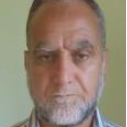
G M Rather
Work place: ECE Department, National Institute of Technology (NIT), Srinagar, J&K, India – 190006
E-mail: gulammohdrather@yahoo.co.in
Website:
Research Interests: Computational Science and Engineering, Engineering
Biography
G M Rather has received his Ph.D degree from I.I.Sc Banglore. He is presently working as Professor in the department of ECE, National Institute of Technology (NIT) Srinagar J&K, India. He has more than 35 years experience of teaching and research, particularly in the field of communication systems, computer networks and advanced wireless systems.
Author Articles
Free Space Optics (FSO): A Promising Solution to First and Last Mile Connectivity (FLMC) in the Communication Networks
By M Mubasher Hassan G M Rather
DOI: https://doi.org/10.5815/ijwmt.2020.04.01, Pub. Date: 8 Aug. 2020
We are running in the communication era demanding a very large bandwidth for high speed applications. Among the available bandwidth technologies, the optical fiber seems the most appropriate and best fit. The optical fiber technology laid down at the backbone networks has almost replaced the preexisting coax cables. To extend fiber connectivity to the end user, especially in congested and remote areas is quite a difficult task in the context to cost and installation time. Therefore, the first and last mile connectivity (FLMC) is still a bottleneck in extending the beauty of optical fiber to the edge of the network. In most of the applications, the connectivity from backbone to the end user is carried out with the radio or copper links having a much lesser capacity than optical fiber. Keeping in view the nature and size of emerging applications, the FLMC needs to be addressed with the appropriate technology. To address this issue, the emerging solution is optical wireless communication like free space optics (FSO). The FSO is coming as a more promising alternative due to its properties like huge bandwidth and less cost. In this paper, we discuss the possible solution to first and last mile connectivity by FSO links and hence the gap between the optical core and the edge of network can be bridged by FSO communication in reliable and cost effective manner. The significance of the proposed work gives an everlasting impression of using FSO communication in FLMC over the existing ones. The ever increasing demand of high bandwidth can be meticulously met with the FSO communication. The simulation results show that the desirable performance is achieved and is analyzed with performance indicators like Q-factor and BER.
[...] Read more.Centralized Relay Selection and Optical Filtering Based System Design for Reliable Free Space Optical Communication over Atmospheric Turbulence
By M Mubasher Hassan G M Rather
DOI: https://doi.org/10.5815/ijcnis.2020.01.04, Pub. Date: 28 Feb. 2020
The need for much better data rate in support for the applications having the high speed has gathered the attention to the development of Free space Optical communication technology (FSO). But the widespread usage of this technology is restrained by the several ill effects caused by the atmosphere on the propagation of optical signals. In order to mitigate such problems in the FSO communication, relay assistance has been employed and this serves the alternative to the spatial diversity. Free space optical (FSO) communication is a cost-effective and high bandwidth access technique, which has been receiving attention to recent commercialization successes. FSO get affected by the weather turbulence and it leads to severe problems in the transmission channels. In this paper, we proposed the Centralized Relay selection and Optical Filtering (CROF) for processing the signals in the FSO system which overcomes the environmental challenges. Initially, an effective relay is selected with the centralized switch and stay algorithm. This algorithm selects suitable relay for serial path transmission. Here, the serial path is considered for signal transmission in a free path and the distributed Greedy algorithm with serial transmission is utilized to obtain more information. Then atmospheric turbulence induced scintillation noise presented at the signal is eliminated through modified Kalman filtering. Finally, the performance of the proposed FSO system is evaluated in MATLAB simulation platform and these evaluations are analyzed for different atmospheric conditions like fog, haze, rain and clear weather. The performance evaluation shows that the proposed algorithm outperforms the non-cooperative scheme and an existing relay selection protocol and reliable communication with improved SNR and BER is achieved.
[...] Read more.Other Articles
Subscribe to receive issue release notifications and newsletters from MECS Press journals